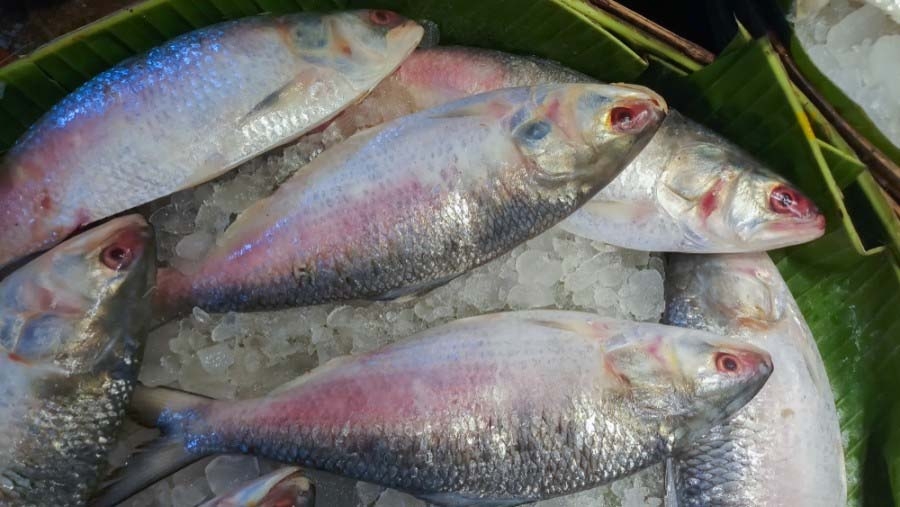
UNB, Chandpur
The 22-day ban on catching hilsa is expected to yield a very good result as huge mother-hilsas have laid eggs during the period.
Experts said the hilsa production may hit 5.45 lakh metric tonnes if the government takes effective measures for conserving jatka (Hilsa fry).
Dr Mohammad Anisur Rahman, a hilsa researcher and chief scientific officer at the Bangladesh Fisheries Research Institute, said, “Hilsas lay eggs round the year but mother hilsas come to rivers from sea and lay eggs during the ban period and then go back to the sea. So, it’s very important to ensure the uninterrupted movement of mother hilsas from the sea to rivers.”
“During the breeding period, a mother hilsa usually releases 10-12 lakh eggs and this year, the new moon on the lunar phase occurred on October 6 while the full moon appeared on October 20 which is believed to be the right time of laying eggs. So, we’re getting the results from the ban,” he said.
Dr Anisur also suggested taking steps to ensure the uninterrupted movement of mother hilsas from the sea to rivers and their safe spawning during the peak breeding season, stopping sand lifting from rivers and restricting hilsa netting during the ban period.
According to a survey, this year 51.7 percent of mother hilsas laid eggs, setting a new record as it is .5% more than the previous year, he said.
Around 39,000 crore hilsa fry are expected to be found during the next season if the government can successfully preserve the jatka, he hoped.
The government will impose an eight-month ban from November 1 on jatka catching and there will be a campaign in this regard, officials said.
The government imposed the 22-day ban on catching, selling, hoarding and transporting hilsa from October 4 midnight with a view to ensuring the safe spawning of the popular fish during its peak breeding time.
The objective of the restriction on fishing from October 4 to October 25 is to save the mother hilsas as they lay eggs during the period.
According to the Ministry of Fisheries and Livestock, hilsa production jumped from 3 lakh mts in 2008-09 to 5 lakh mts in 2017-18 and its production touched 5.33 lakh mts in 2019 thanks to the government for its various steps taken to give a boost to its output.
Bangladesh’s over 12.0 per cent fish production comes from hilsa, posting the highest contribution to the country’s fish output as a single fish species.

Hilsa, the national fish of Bangladesh, is recognized as a certified patented product of Bangladesh. The marine fish flies to rivers in Bangladesh to lay eggs. The fish is very popular both in Bangladesh and West Bengal. About 75 percent of the world’s hilsa is netted in Bangladesh.
Chandpur is considered one of the largest trading hubs of hilsa in Bangladesh as the fish from the Padma River is much more popular than the ones that come from other rivers because of its extremely pleasing taste.

